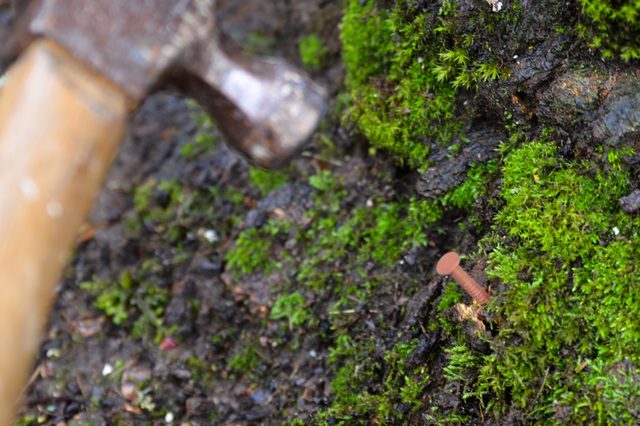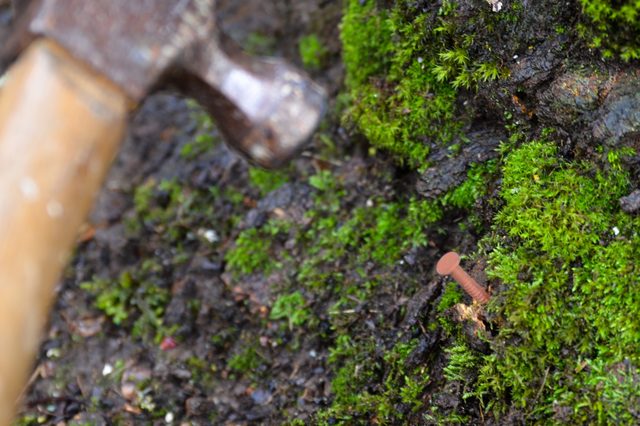
While “save the trees” movements abound all over the world (and rightly so), there are instances when you might need to kill off a tree. For starters, some trees end up blocking precious sunlight that is needed by other plants in the garden. In some of the worse case scenarios, certain trees end up bearing fruit that can inflict harmful damage onto humans and animals alike if they fall from the branches.
Some people resort to sowing salt or other harmful chemicals in the soil underneath the tree to deprive it of nutrients or to poison it. However, one caveat of such a solution is that it ends up rendering the soil infertile and unsuitable for other plants.
One solution for killing off a tree that does not harm the soil that nourishes it involves the use of copper nails. Another benefit that killing a tree using copper nails presents is that it does not require many materials and all of them are usually on hand at any time.

To kill off a tree, you need a hammer, some mud and a handful of copper nails (the exact quantity would depend on how wide the circumference of the tree in question is):
- Pick out copper nails that are long and thick enough that they can penetrate deeper into the tree and so that they have a bigger surface area.
- Position one copper nail at the base of the tree and then use a hammer to drive it at a slightly downward angle.
- Measure out about a half-inch distance from the first copper nail, and then drive in another copper nail onto the spot. As with the first copper nail, hammer down the second copper nail using a downwards motion at a slight angle.
- Repeat step 3 until you got the base of the tree covered in copper nails. It is important to pepper the base of the tree with as many copper nails as possible to damage its growth cells and prevent them from developing further. More copper nails also equate to a higher concentration of copper penetrating into the tree; thus, poisoning it faster. Smaller, thinner trees would require fewer copper nails, while one copper nail has been known to take down a thin young sapling fairly easily.
- Cover the copper nail heads with mud to conceal them, and to maintain the natural look of your garden as you wait for the tree to die out. You can omit this step, however, if you do not mind the copper coloring showing on the tree trunk.
- Once the tree has died, scrape off the mud around the base so you can pry out all the copper nails. It might be a good idea to note how many copper nails you used to that you can be sure that you have taken out all of them. This step is a precautionary measure that is meant to prevent any leftover nails from flying off the trunk and injuring someone when you cut down or remove the tree from the ground.







